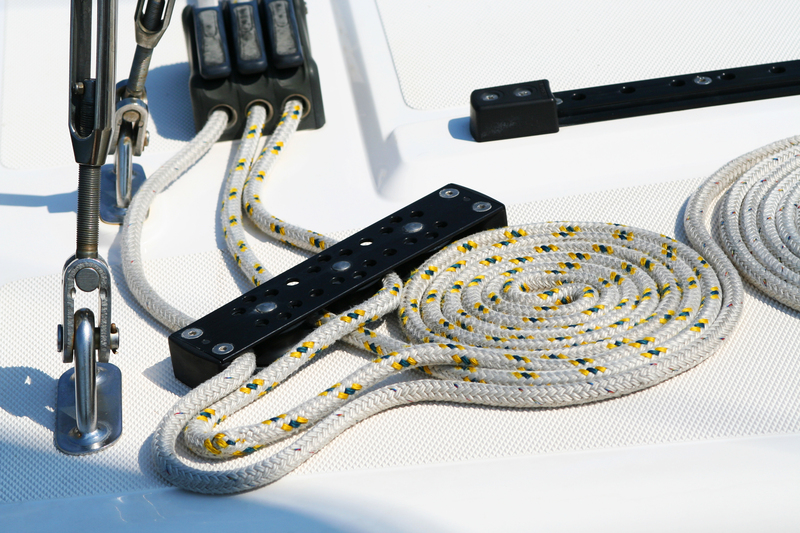Discover Why DIY Piano Moving Can Be More Trouble Than It's Worth
Posted on 12/06/2025
Discover Why DIY Piano Moving Can Be More Trouble Than It's Worth
Moving a piano is no small feat. While the idea of saving money by moving your piano yourself can be enticing, DIY piano moving is a decision that comes loaded with risks and challenges. If you're contemplating whether to tackle piano relocation on your own, it's essential to consider all the factors involved. This comprehensive article will uncover the many reasons why handling piano moving on your own can end up being more troublesome--and expensive--than hiring professionals.

Understanding the Complexity of Piano Moving
Pianos are unique, intricate instruments. They combine artistic craftsmanship with heavy materials and precision engineering. Before you attempt to move one by yourself, it's crucial to understand what's really involved. Here's why moving a piano is more complicated than relocating typical household furniture:
- Significant Weight: Even small upright pianos can weigh upwards of 300 pounds, while grand pianos can tip the scales at over 1,000 pounds.
- Irregular Shape and Delicate Parts: Pianos are awkwardly shaped and contain sensitive internal components--strings, keys, pedals, and actions--that can easily be jarred or damaged during a move.
- High Monetary and Sentimental Value: Many pianos are prized family heirlooms or represent a significant financial investment. Damaging your instrument during a DIY move can be devastating both emotionally and financially.
The Mechanics of Piano Transport
Moving a piano isn't just about lifting and carrying. It requires understanding leverage, balance, and careful planning to ensure both the instrument and your property remain unharmed. The physics behind piano relocation often makes DIY attempts risky--and potentially disastrous.
The Hidden Dangers of DIY Piano Moving
Attempting a do-it-yourself piano move exposes you to a host of hazards. Here are some common issues faced by those who go the DIY route:
Risk of Physical Injury
One of the most significant dangers is the risk of personal injury. Pianos, with their massive weight and awkward size, can cause a range of physical injuries:
- Back injuries from improper lifting techniques
- Crushed fingers or toes from accidental drops
- Slips and falls due to unbalanced loads or slippery surfaces
- Scrapes, bruises, and more severe injuries from collisions or shifting weight
Damage to the Piano
Pianos are not just heavy--they are also structurally delicate. The intricate soundboard, action, and finely tuned strings can all be easily thrown out of alignment by an abrupt movement or unintentional jolt. Common types of damage include:
- Broken legs, pedals, or casters
- Cracked soundboard or cabinet
- Slackened or snapped strings
- Lost piano tuning (often requiring costly adjustments)
Home Damage
While moving a piano, it's not uncommon for walls, door frames, flooring, and stairs to get scratched, gouged, or dented. That beautiful instrument becomes a liability if it damages the very space it's meant to enhance.
Myths About DIY Piano Moving Debunked
There are several widely held beliefs that make DIY piano moving seem more attainable than it really is. Let's take a closer look:
"Pianos Have Wheels, So Rolling Them is Easy"
Most upright pianos do have small brass wheels, but these are designed for minor adjustments within a room, not for moving between locations. Using these wheels on uneven surfaces or stairs is a recipe for disaster.
"It's Just Like Moving a Couch"
Unlike a couch, pianos have uneven weight distribution and delicate internal parts. One wrong tilt or bump can cause irreversible and expensive damage.
"Four Strong People Can Move Anything"
Even a team of strong individuals can falter without specialized knowledge and the correct equipment. Pianos can slip, tip, or shift their weight unpredictably, creating situations strength alone can't handle.
The Professional Advantage: Why Hire Piano Movers?
Professional piano movers exist for a reason. Their training, experience, and equipment make all the difference. Here's why hiring professional piano movers can save you money, time, and stress:
- Specialized Equipment: Professional movers use custom dollies, skid boards, moving straps, and padding designed for pianos, reducing the risk of damage to the instrument and the building.
- Trained Personnel: Experienced movers understand the balance, leverage, and care needed to transport pianos of every size and type.
- Insurance Coverage: Professionals are insured. If an accident does occur, your instrument and property are protected--unlike with DIY moves.
- Time Efficiency: What takes amateurs several risky hours can often be completed by professionals in a fraction of the time.
- Safe Transportation: Vehicles used by pros are equipped to safely secure pianos during transit, avoiding jostling and shock.
Expert Handling of Unexpected Challenges
Professional piano movers anticipate and solve tricky logistical problems--tight corners, stairs, or challenging doorways--without guesswork. Their expertise means fewer surprises, making your move smooth and safe.
The True Costs of DIY Piano Moving
Trying to cut costs by moving your piano yourself can backfire. Let's break down the hidden expenses you might not have considered:
- Equipment Rental: Skids, dollies, moving straps, heavy-duty blankets--all must be rented or purchased. These are not the same as the ones used for general furniture and can be surprisingly expensive.
- Truck Rental: A standard rental truck may not have the features (such as hydraulic lifts) required for safe piano transport.
- Additional Manpower: You'll likely need to recruit multiple friends or family members--and if someone gets injured, you could be liable.
- Repair Bills: Any damage to the instrument, your home, or the building's common areas (for apartment or condo moves) comes out of your pocket.
- Tuning and Servicing: Even minor bumps can knock a piano out of tune, requiring professional adjustments post-move.
- Lost Time: The process is time-consuming, potentially requiring days instead of hours to complete.
When Saving Money Isn't Worth It
Once you tally the true costs and risks, the small amount you might save is quickly overshadowed by the potential for significant financial loss, injury, or heartbreak.
Testimonials: Real-Life DIY Piano Moving Disasters
While success stories circulate, for every DIY triumph there are many cautionary tales. Here's what a few DIYers said after attempting to move a piano themselves:
- "We thought four of us could handle my upright. It slipped on the stairs and put a hole in the wall. We ended up hiring someone to finish the job AND repairing the drywall!"
- "The wheels jammed on the threshold. The piano tipped and now two keys won't play."
- "My neighbor tried to help but threw out his back. Honestly, it would've been less stressful and cheaper to hire pros from the start."
Don't let DIY optimism cloud practical judgment--stories like these are more common than you might think.

What's Involved in a Professional Piano Move?
If you're curious about what a professional piano moving service does differently, here's an overview:
- Assessment: The movers evaluate the piano's size, weight, type, and the layout of both the origin and destination locations.
- Preparation: Experienced teams dismantle parts that protrude, such as legs or pedals, and secure all moving parts.
- Packing: They wrap the instrument in heavy-duty padding and blankets to protect finishes and delicate mechanisms.
- Moving: Using team coordination and special tools, they methodically navigate the piano to the moving truck, regardless of stairs or narrow passages.
- Transportation: The piano is firmly secured in the moving vehicle to prevent shifting during transit.
- Unpacking and Setup: At the destination, the movers reassemble and set up the piano in its new location, often with recommendations for acclimation and retuning.
With this level of expertise, hiring professionals often proves to be a wise investment--protecting your piano's value and giving you peace of mind throughout the process.
Conclusion: Don't Risk It--Leave Piano Moving to the Pros
While the ambition to move your own piano may be admirable, the reality is that the risks and potential complications far outweigh the perceived savings. Do-it-yourself piano relocation challenges include personal injury, costly damage, and wasted time--none of which are worth the gamble.
If you value your instrument and your well-being, hiring professional piano movers is the safest, smartest route. Trained experts possess the knowledge, equipment, and insurance to get the job done efficiently and safely, leaving you to enjoy your music in your new space...without the regrets.
Ready for a Stress-Free Move?
Don't let your piano--and your back--suffer from a DIY disaster. If you need to relocate your cherished instrument, do yourself a favor and consult with professional piano movers in your area. Focus on what you do best--playing and enjoying music--and leave the heavy lifting to the experts.
Remember: When it comes to piano moving, some things are better left to the professionals!



